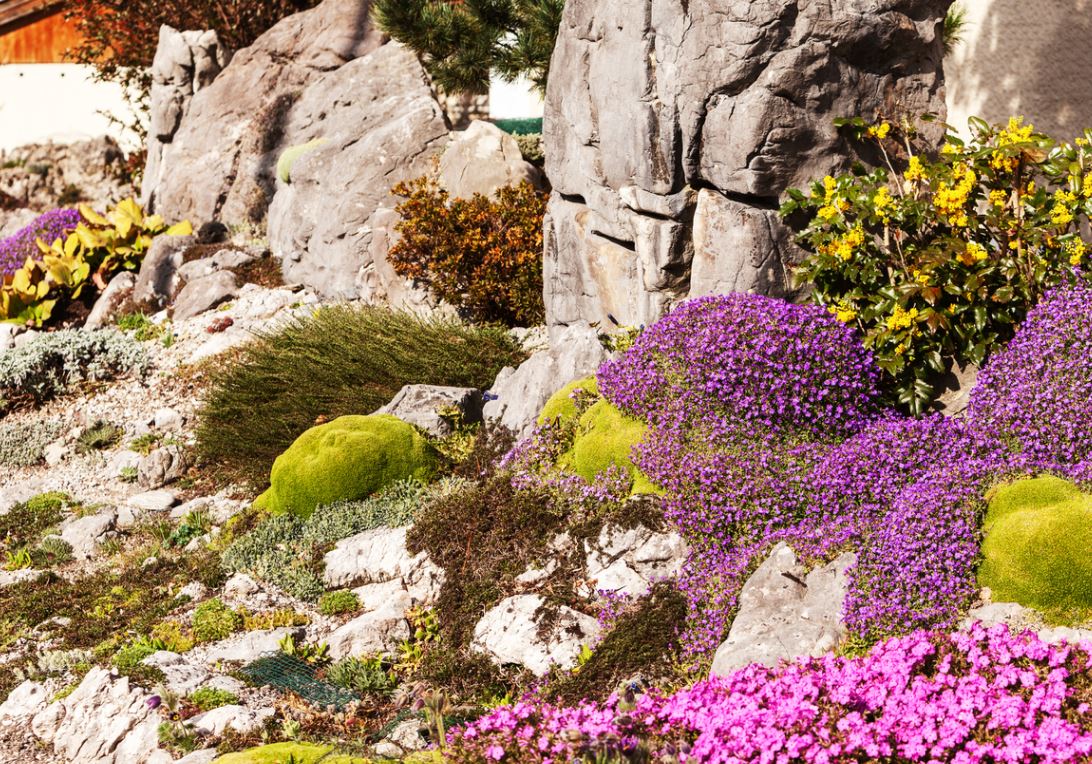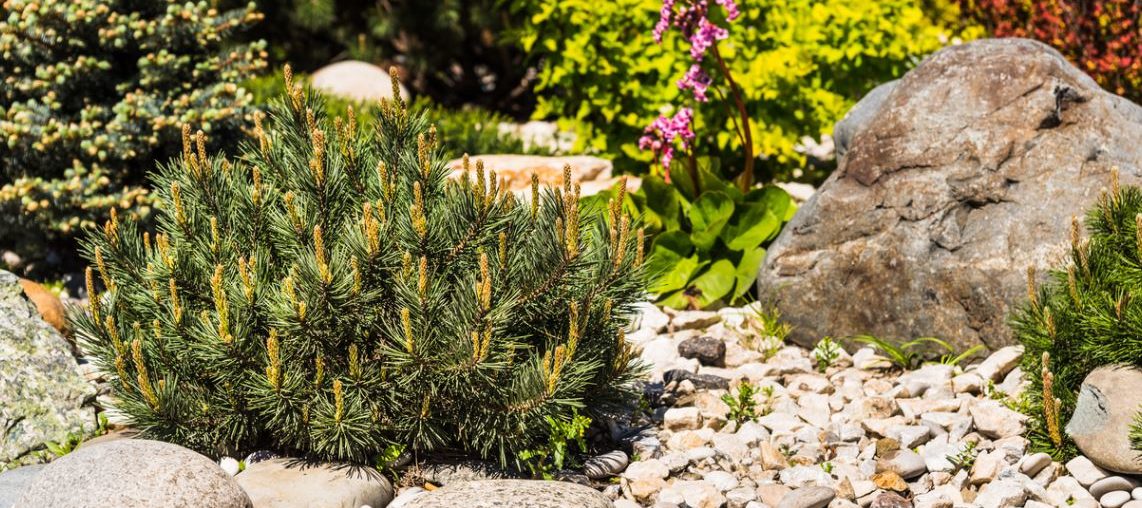A rock garden brings finesse and modernity when it is well laid out. Discover our tips for creating your rock garden.
The important elements to build your rock garden
Ideally, a rock garden should present a slope of 30 cm for 1.20 to 1.50 m in width.
Remove humus and existing plants on the rock garden site. If the area is poorly drained, dig trenches 45 cm deep at intervals of 90 cm to 1.80 m, and fill them with broken bricks, stones and gravel. Cover this installation with loam, peat and crushed stones in equal volumes. Use the same mixture over the entire surface of the rockery.
The choice of stones
Choose stone slabs from different shapes and sizes. Avoid color and texture contrasts. All stones must appear to come from the same place. Start by placing it at the bottom of the slope, in the center. Choose one of the bigger ones as a cornerstone. Dig a little to make it sit securely, then turn its most attractive side out.
Place two rows of stones smaller and smaller so as to form an L. Orient them so that the veins of the stone run in the same direction and tilt them a little in the direction of the slope to facilitate the runoff waters.
Tamp some soil between the stones and on top, until practically burying the small stones at the ends. Make other rows in the same way, going up.
Let the earth settle down for 7 to 10 days. Fill in any voids that form, if necessary, then cover the whole with crushed stones or clean gravel that you will find at your nursery or garden center.

The choice of plants
Choose conifers at fairly slow growth, creeping plants, dwarf bulbous plants and perennial ground cover species well adapted to your climate.
The mountain plants – benoîtes, edelweiss – appreciate this type of culture and do not fear cold winters under a thick layer of snow.
You can also plant carnations mignardise, low campanulas, golden baskets and silver baskets, aubriettes, saxifrage … The choice is vast.
Dwarf annuals will add splashes of color. Learn about the species that acclimatize well in your area. Plant dwarf junipers and other small shrubs at the foot of large stones.
In the crevices, plant tufts of houseleeks, gentians, crocuses, dwarf irises, daffodils and wild tulips … Choose brightly colored plants – armeria, muscari, wild thyme – to cascade over the stones.
Read also :








